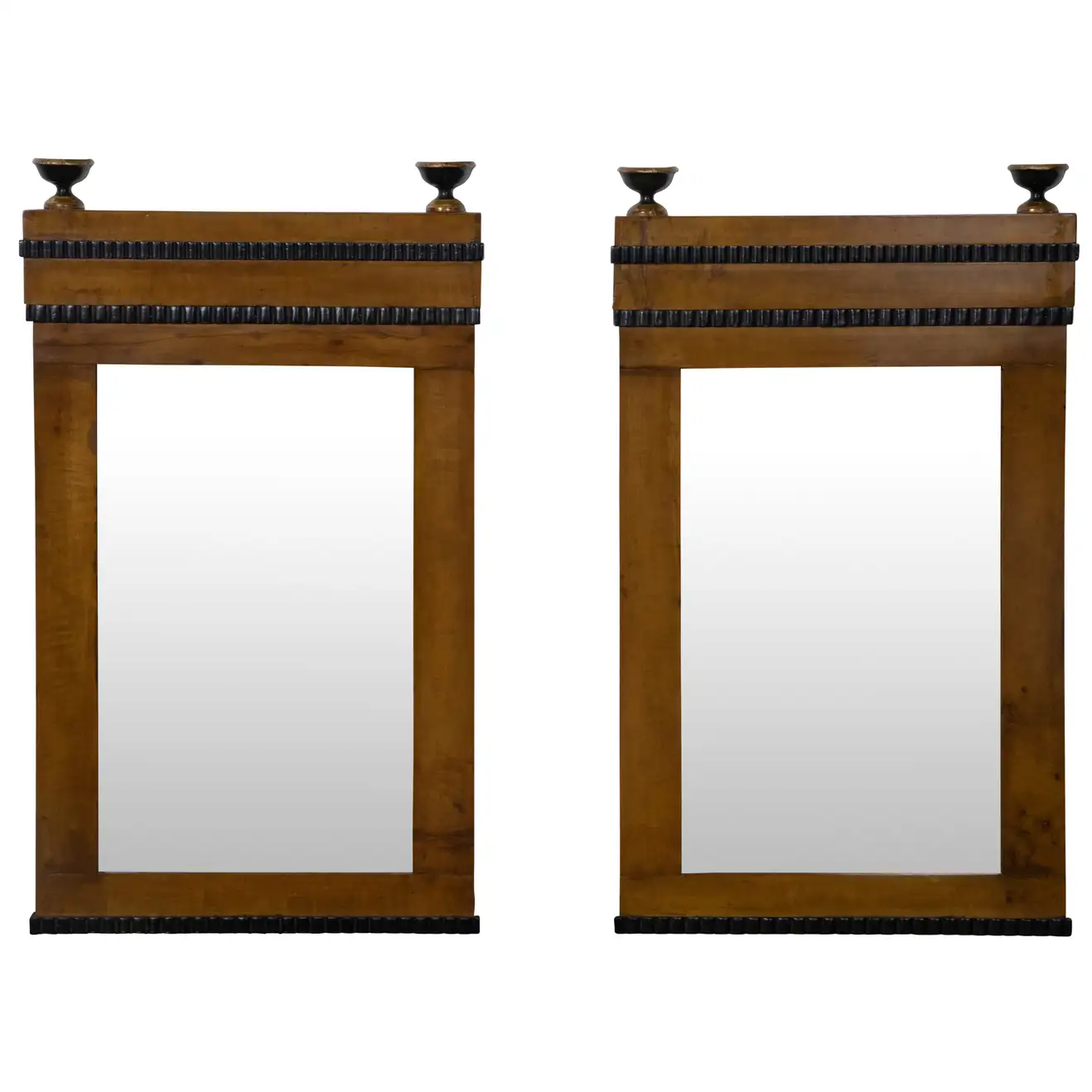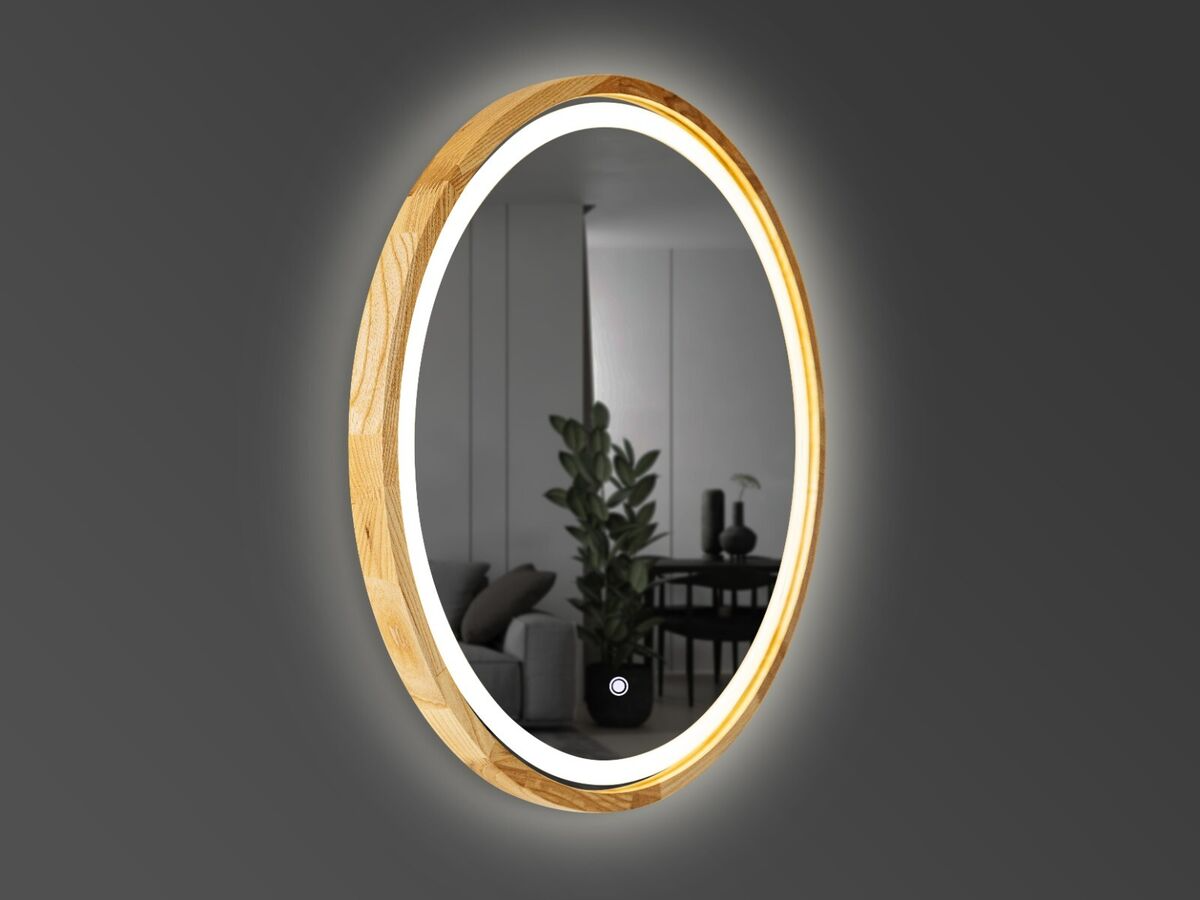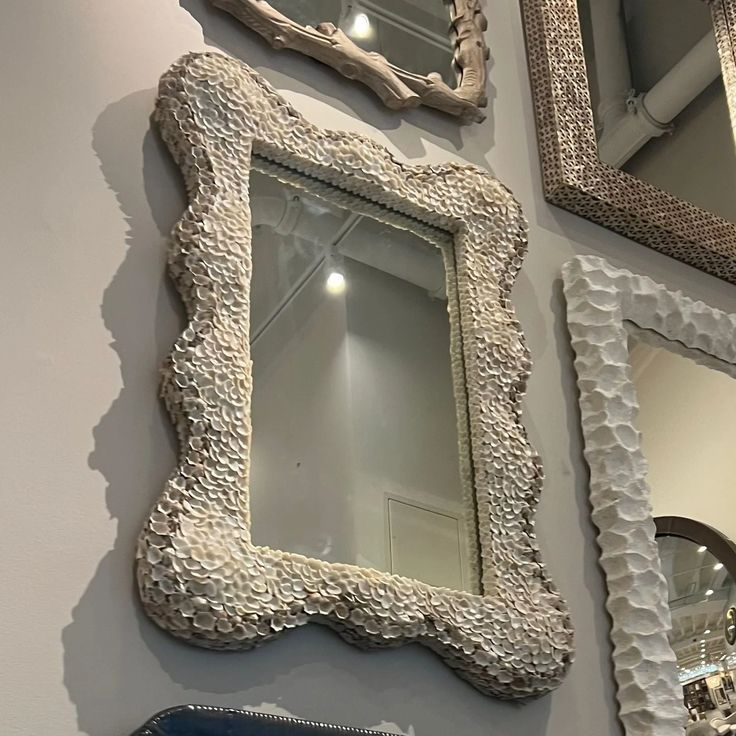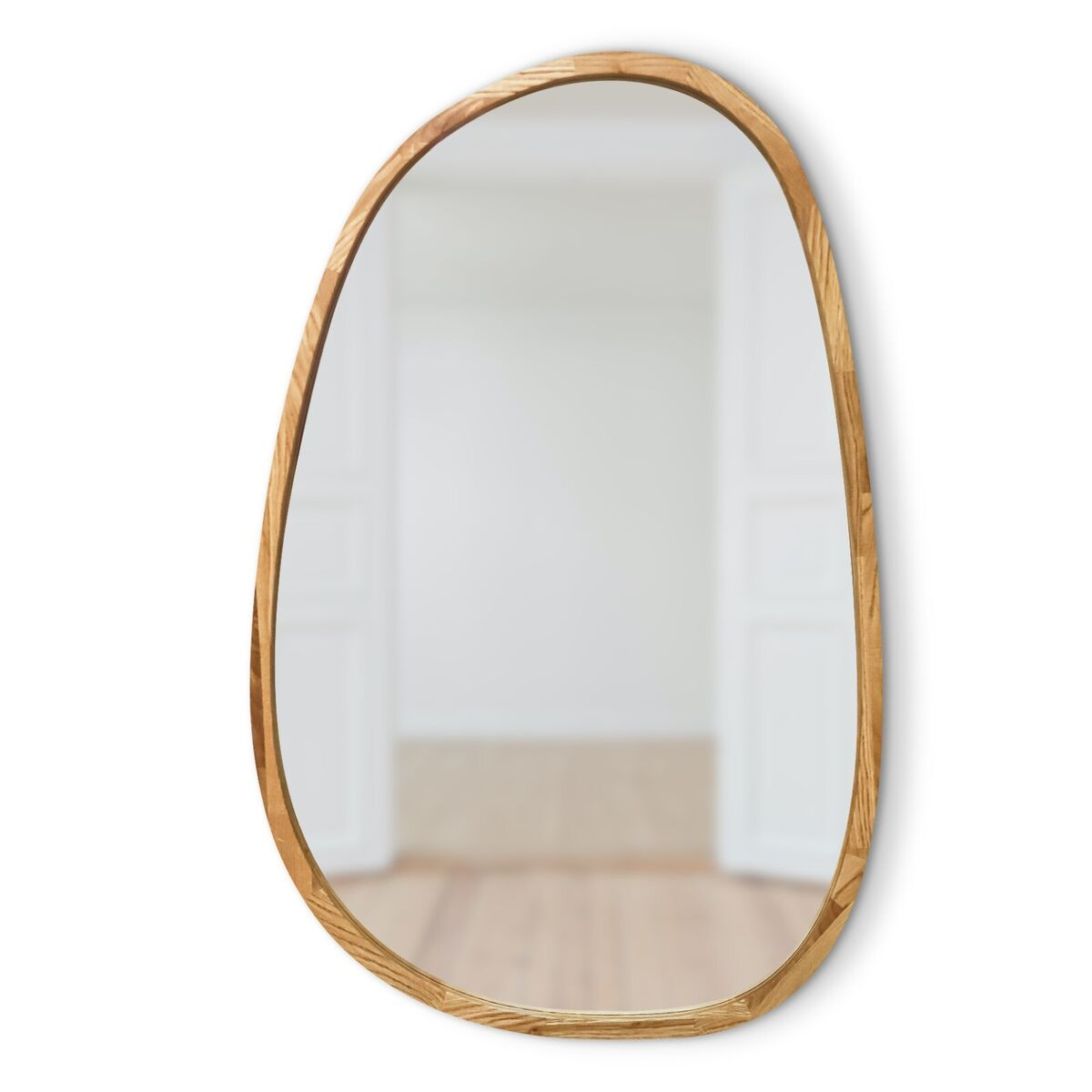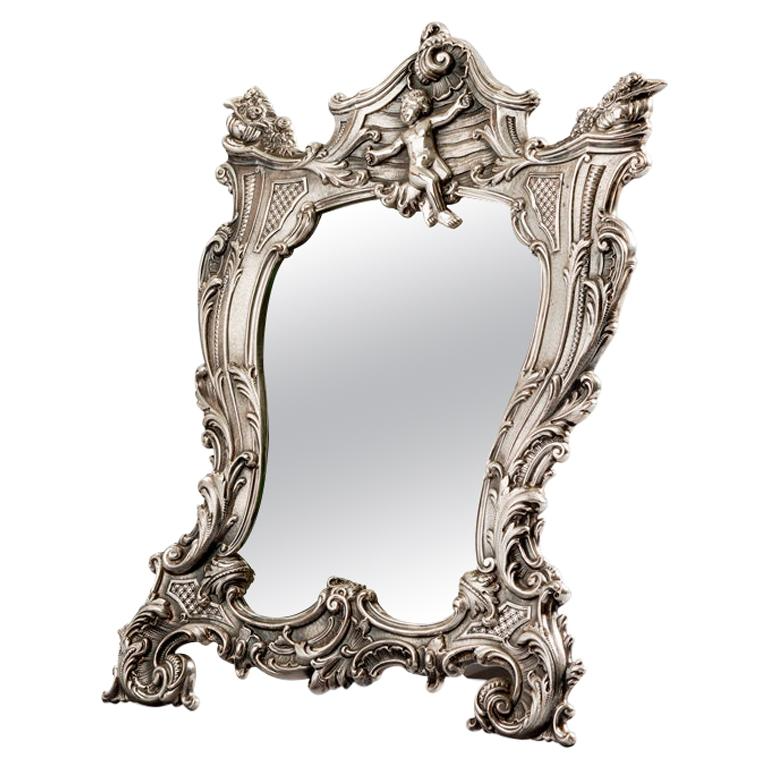Introduction: The Alchemy of Creating a Mirror
At first glance, a mirror is simple—an everyday object that reflects our image with perfect clarity. However, the process of creating a mirror is anything but straightforward. It is a delicate dance of chemistry, precision, and artistry that transforms a piece of glass into a reflective masterpiece. This article will illuminate the intricate journey from raw materials to the polished mirrors that adorn our walls.
The Genesis of Glass: The Foundation of Mirrors
From Sand to Substance: The Birth of Glass
The journey of a mirror begins with the creation of its fundamental element—glass. The process involves heating a mixture of silica (sand), soda ash, and limestone to temperatures exceeding 1700 degrees Celsius. The result is a molten glass that, when cooled, forms a smooth and hard surface that will eventually become the mirror’s base.
Shaping the Future: Molding and Cutting Glass
Once the glass is formed, it must be shaped to specific dimensions. Large sheets of glass are cut with extreme precision, ensuring that each piece is free from imperfections that could distort its reflective surface. This step is crucial as any flaws in the glass can significantly affect the quality of the finished mirror.
Laying the Foundation: Preparing the Glass for Silvering
A Clean Canvas: Ensuring Purity and Perfection
Before a sheet of glass can be transformed into a mirror, it must be immaculately clean. Any traces of dust, dirt, or grease would prevent the reflective coating from adhering evenly. Therefore, the glass undergoes a rigorous cleaning process, typically involving various chemical treatments and scrupulous washing.
A Flawless Surface: Inspecting and Perfecting the Glass
Once cleaned, the glass is closely inspected for any remaining irregularities. Only the most flawless pieces proceed to the next stage. In the event that a blemish is detected, the glass is either recycled or repurposed, emphasizing the industry’s commitment to quality and sustainability.
The Magic of Metallization: The Process of Silvering
Modern Alchemy: Applying the Reflective Coating
The heart of the mirror-making process is the application of a reflective metal coating—a procedure commonly referred to as “silvering,” though other metals like aluminum are often used. This involves spraying a thin layer of metal onto the clean glass surface in a carefully controlled environment to ensure a uniform coat.
The Layered Approach: Enhancing Reflectivity and Protection
After the initial metal layer is applied, additional protective coatings are added. These may include copper, which acts as an additional reflective layer, and one or more coats of paint that protect the metal from tarnishing and damage. Each layer plays a role in enhancing the mirror’s durability and reflectivity.
The Art of Precision: Quality Control and Finishing Touches
Reflections of Quality: Rigorous Testing and Inspection
Every mirror must pass through a series of quality control checks. These inspections assess the mirror’s reflectivity, ensure there are no defects, and confirm that the size and shape adhere to specifications. It is a thorough process that guarantees the final product meets both the manufacturer’s and the consumer’s standards.
Edging and Embellishments: The Final Craftsmanship
Once a mirror clears quality control, it can receive further processing, such as bevelling or framing. Edging techniques add both functional and aesthetic value, reducing the risk of chipping while providing a finished look. Frames offer not just support but also style, allowing a mirror to complement various decors.
The Science Behind the Shine: Understanding the Chemistry of Mirrors
The Elemental Dance: Metals and Their Roles in Reflectivity
The choice of metal used for the reflective coating impacts the mirror’s properties. Aluminum, for example, is favored for its high reflectivity and oxidation resistance, while silver, though more expensive, provides an unparalleled warm and clear reflection.
Protective Measures: The Chemistry of Coatings
The protective coatings applied over the metal layer are designed to resist corrosion and physical damage. Copper acts as an intermediary reflective barrier, while paints and sealants ward off environmental factors that could degrade the mirror’s quality over time.
Installation and Integration: Mirrors in Daily Use
From Factory to Installation: The Logistics of Mirror Transportation
The transportation of mirrors from the factory to their final destination is a delicate operation. Adequate packaging and careful handling are essential to prevent damage. The logistics of mirror delivery require meticulous planning to ensure these fragile items arrive intact.
A Reflection in the Room: Mirrors as Interior Elements
Once a mirror reaches its new home, it becomes more than a tool for reflection; it is an integral part of interior design. Whether it’s a bathroom vanity mirror, a full-length dressing mirror, or an ornate decorative piece, each mirror serves a specific purpose and adds to the room’s ambiance.
The Environmental Aspect: Sustainability in Mirror Production
Recycling and Reuse: Minimizing Waste
The mirror industry is increasingly focused on minimizing its environmental impact. Recycling programs for glass and metal coatings are in place, and many manufacturers are implementing ways to reduce waste and energy consumption during production.
Green Innovations: The Future of Mirror Manufacturing
Research into more environmentally friendly manufacturing processes and materials is ongoing. Innovations such as non-toxic metal coatings and sustainable production methods are shaping the future of mirror-making, aiming to make the process as kind to the planet as it is to the consumer.
The Care and Maintenance of Mirrors: Preserving the Reflection
Keeping it Clean: Best Practices for Maintenance
Proper maintenance is key to preserving a mirror’s shine and longevity. Regular cleaning with appropriate products ensures that the reflective surface remains clear and bright. Avoiding harsh chemicals and abrasive tools is critical to prevent damage to the mirror’s delicate coatings.
Longevity and Repair: Dealing with Aging and Damage
Even with careful maintenance, mirrors can show signs of aging, such as desilvering or black edges. Understanding how to address these issues can help extend the life of a mirror or determine when it may be time for a replacement.
Through the Looking Glass: The Role of Mirrors in Culture and Art
Reflections in Art: The Mirror as Muse
Mirrors have been a source of inspiration in art and culture throughout history, symbolizing truth, vanity, and the passage of time. They have been depicted in countless works of art, reflecting society’s fascination with the duality and mystery of reflections.
Philosophical Perspectives: What Mirrors Teach Us About Ourselves
Beyond their practical use, mirrors invite introspection and self-examination. They are tools for personal and philosophical reflection, offering a literal and figurative lens through which we can view ourselves and the world around us.
Conclusion: The Enduring Enchantment of Mirrors
The creation of mirrors is a testament to human ingenuity, a process that combines ancient practices with modern technological advancements. It is a craft that requires precision, care, and an understanding of both the artistry and chemistry involved in producing the perfect reflective surface.
Mirrors are more than just household objects; they are portals to self-discovery, tools of practicality, and elements of beauty. They serve as silent companions in our daily lives, reflecting not only our images but also the world we have built around us. As we continue to innovate and seek sustainability in mirror production, we honor the legacy of this age-old craft and ensure its relevance for generations to come.
The art of making mirrors is as multifaceted as the reflections they cast. From the initial selection of materials to the final installation, each step in the process is crucial to crafting a mirror that is both beautiful and functional.
While how to use zote soap is traditionally used for laundry and cleaning tasks, it can also be dissolved in water to create a gentle, eco-friendly solution that effectively cleans and shines your bathroom mirror without leaving streaks. As we stand before our mirrors each day, we rarely consider the complex journey that has led to their creation. Yet, it is this very complexity that enriches the value of mirrors, making them an indispensable part of our lives—a looking glass into our world and ourselves.
